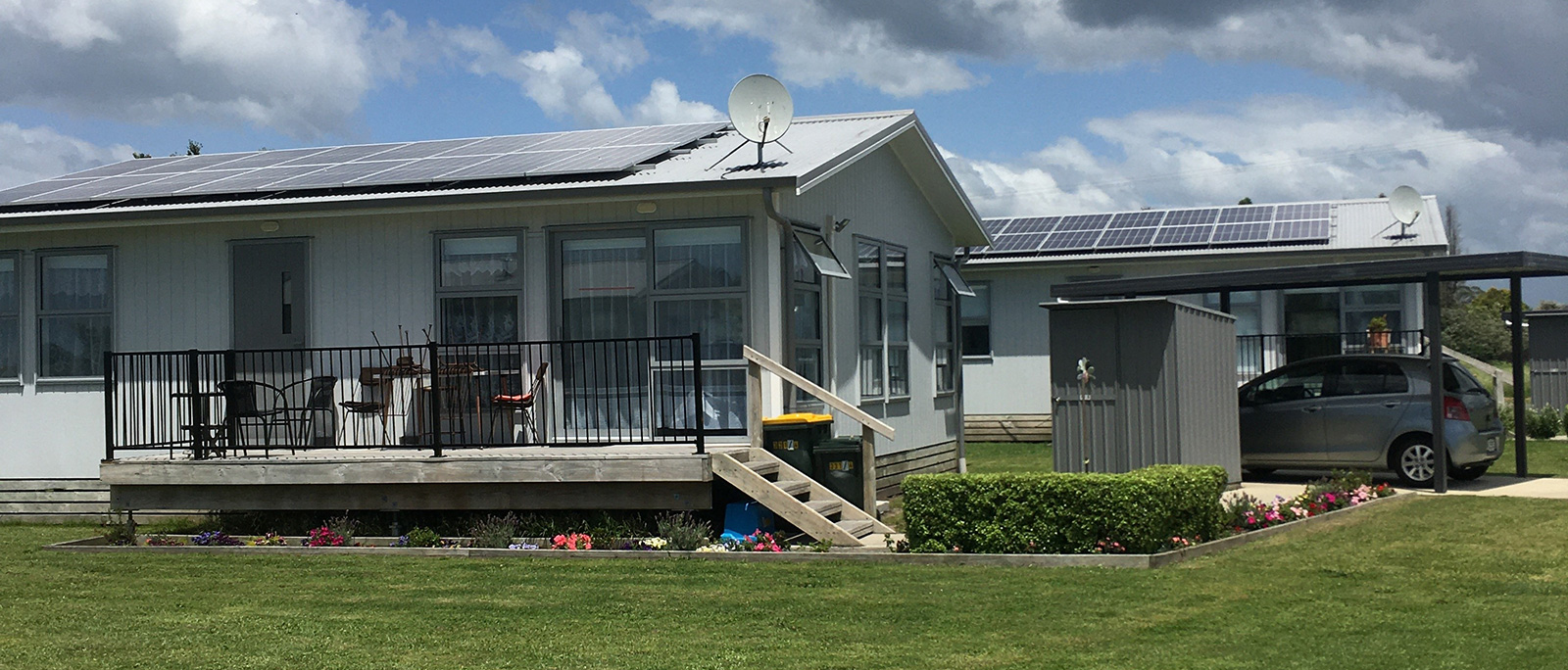In the Whakatane region of the Eastern Bay of Plenty, Kōkōhīnau Papakāinga Trust is building a mixed housing community development for kaumatua (elders) and whānau (families), with shared facilities, wraparound services and connection with the Kōkōhīnau marae next door.
Kōkōhīnau Papakāinga Trust is part of the latest Gen Less 'Right Side of History' campaign that highlights the important mahi New Zealanders are doing to reduce emissions and get us on the right side of history on climate change.
Community living
In total, the new development will be made up of 34 houses – a mix of 2-bedroom and 3-4 bedroom homes. Five houses have already been completed in stage one. These were built to house whānau whose houses had suffered irreparable damages after Cyclone Debra flooded the town of Edgecumbe in 2017.
The next stage will see a further 14 houses built, with facilities and essential services for tenants as well as for whānau, hapū, marae, iwi, and community. These services will include medical support, counselling, health promotion, fitness and mobility, budget advice, and marae-based programmes. The Trust has also set aside an area of land that will become a 'maara kai' – a space for tenants to grow their own plants and vegetables.
Those living at the new development will be welcomed onto the marae and encouraged to get involved in events and functions held there. Trustee Hemana Eruera says this is part of the Trust’s core value of 'Hono ki te Whenua – Hono ki te Whānau – Hono ki te Marae' or 'Reconnect to the Land – Reconnect to the Families – Reconnect to the Marae'.
In the final stage, there will be land available with the capacity for a further 15 homes, which will be built for whānau on a 'lease to own' or 'first home ownership' saving programme, making it easier for people to access affordable, healthy homes.
The Kōkōhīnau Papakāinga Trust has been recognised for its quality and innovative work. In 2019, the Trust won the 2019 Australasian Housing Institute Award for Excellence in Social Housing.

Powered by the sun
The homes are all kitted out with energy efficient heat pumps and solar panels. The solar system includes solar PV, batteries, and a shared electricity grid. Each home would be capable of generating 35 kilowatts of electricity a day through the panels, and any power not used would be stored in the batteries and shared either to the grid or to future homes built in the development.
The solar panels were installed with support from the Ministry of Business Innovation and Employment’s Māori Housing Renewable Energy Fund and will make a big difference to the comfort and living costs of residents.
"The Trust's aim is to build a marae-based papakāinga or housing development that will provide people with high-quality, secure, warm and affordable homes,” says Trustee, Hemana Eruera.
"Through investment in renewable solar energy, our tenants will see huge savings on their energy costs and have the confidence to use their heat pumps more. With 34 homes in total, it's also an opportunity for us to contribute to minimising emissions."
Because the area is prone to flooding and earthquakes – like the 6.5 magnitude earthquake that rocked the area in 1987 and left many families homeless – the Trust has used new building technology that fixes houses on stainless steel piles which provide height and also enable flexible movement to counteract earthquakes. The houses are 1.5 metres off the ground which means they’re also well above flooding level.
"In Māoridom, many iwi have already developed strategic plans around climate change," says Hemana. "We as a Trust are very aware of the current climate changes in our area. That's why as part of our climate change strategy, we have adopted both these building technologies and also renewable solar energy – to move with the times, and the environment."

Connection to whenua
Papakāinga often describes a housing community with an ancestral connection to the land, and that's very important to the work of the Trust, says Hemana.
"As we are the Kaitiaki or Guardians of the whenua, our purpose is to ensure that the land we have is preserved, protected, developed and enhanced for the benefit of future generations," says Hemana. "We want to provide the present generation with the opportunity to reconnect to their land, reconnect to families, and reconnect to their marae."
That connection to the marae is an important aspect of the new development. The hapū or sub-tribe of Kōkōhīnau Te Pahipoto, like other hapū in the area, are descendants of the original guardians of the land. For the Trust, it’s vital to maintain the mana or status of the whenua by preserving and protecting their taonga.
"The land is 'taonga tukuiho', which means gifted property from our tīpuna or ancestors," says Hemana. "Many of our people who have lived away from the marae and want to return will be able to have a relationship with the marae and reconnect with their culture and traditions, as well as contributing to the marae. The marae and the Trust will always complement each other."
